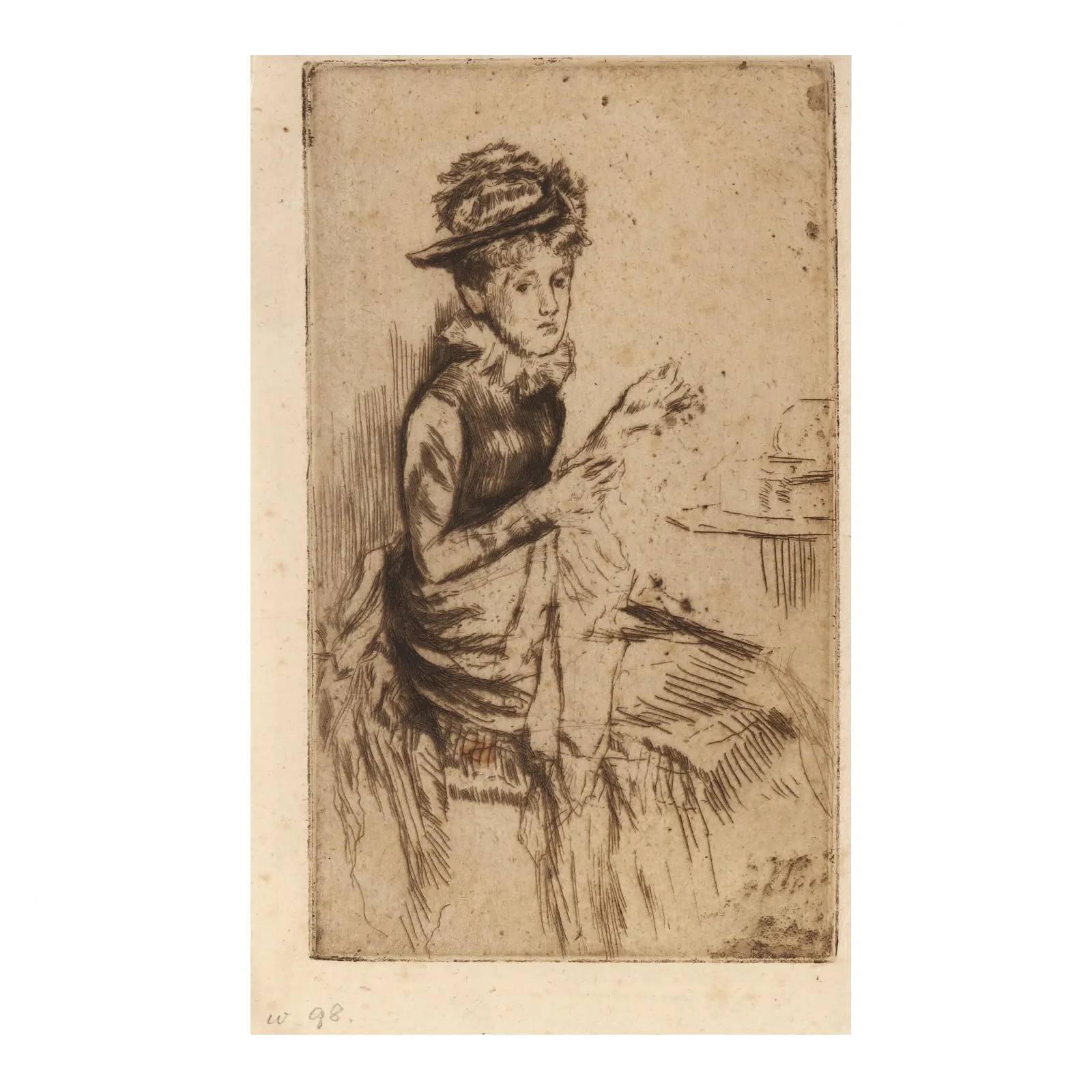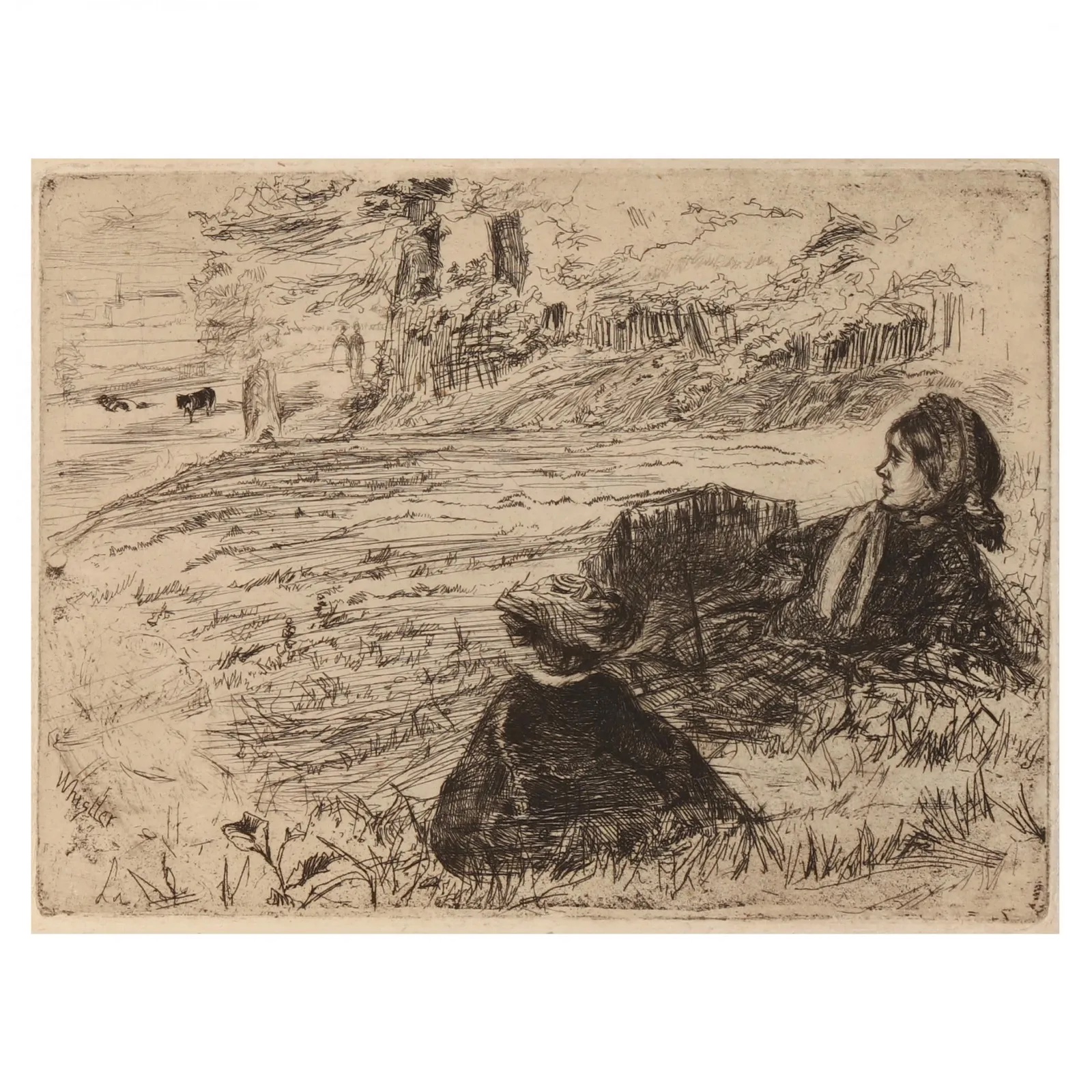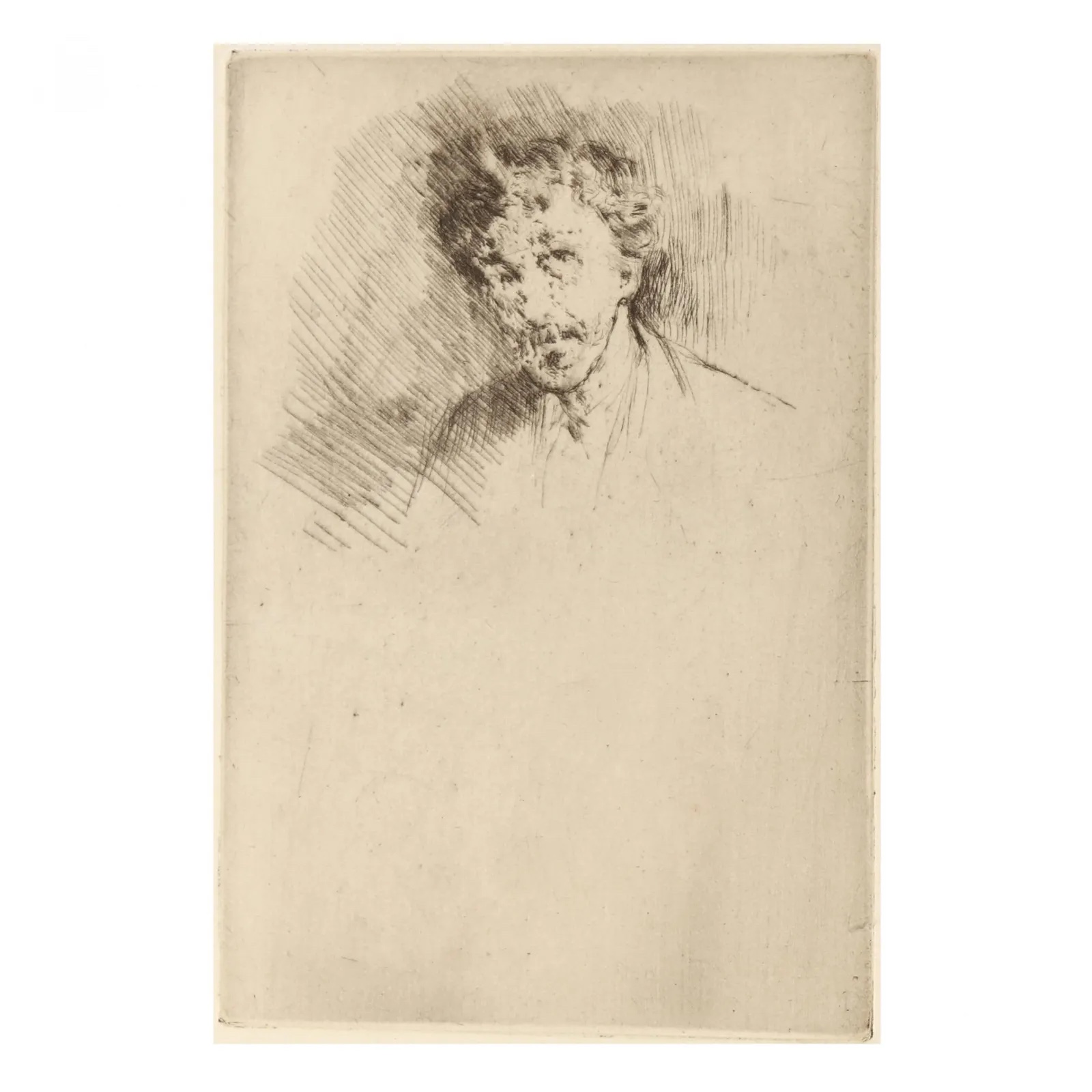HILLSBOROUGH, N.C. — Whistler prints from the famed collection of Howard R. Guild, Sr. (1867-1944) will be offered at Leland Little on Friday, March 22. The nine works on paper, including some very rare impressions, come by family descent. The complete catalog is available for viewing and bidding now at LiveAuctioneers.
James Abbott McNeill Whistler (1834-1903) produced close to 500 etchings, lithographs, and drypoints — many of them carrying his famous butterfly signature. The medium offered him the opportunity to sketch ideas quickly, then slowly refine and develop them through multiple states, creating variations with expressive inking.
During the first half of the 20th century, Whistler collecting was at its zenith. Howard Guild, a Harvard graduate who made his fortune as a paper and twine merchant, was among the keenest adherents, amassing the largest private collection of Whistler prints in the United States. Many were donated by his family to the Hood Museum of Art at Dartmouth College in the 1990s.
Among the prints in the North Carolina sale is a copy of the last of Whistler’s etched self-portraits — sometimes called Whistler with the White Lock. Dated circa 1876-1879, it shows the artist with his characteristic white lock of hair: a genetic trait, the result of Waardenburg Syndrome, which both Whistler and his sister shared. Like every lot in the March 22 Fine Art Auction, it is assigned the broad estimate range of $50-$25,000. However, previous copies have sold for $1,500-$3,000 at auction.
The etching and drypoint Tatting, dating from 1873, is a particularly scarce print: only a handful have been offered at auction since 2000. Part of a group of informal female portraits of 1873 (all of them private studies, possibly for projected paintings) the sitter is Maude Franklin, Whistler’s new model and mistress.
Nursemaid and Child is a much earlier work and one of approximately 35 impressions of this second state etching and drypoint published in 1859. This copy has collectors’ stamps to the verso for Thomas Jefferson Coolidge, a native of Boston who was friends with the great print enthusiast Francis Bullard.

'Tatting,' an 1873 etching and drypoint by James Abbott McNeill Whistler, estimated at $50-$25,000 at Leland Little.

'Nursemaid and Child,' an 1859 etching and drypoint by James Abbott McNeill Whistler, estimated at $50-$25,000 at Leland Little.

'Whistler with the White Lock' by James Abbott McNeill Whistler, dating to 1876-79 and estimated at $50-$25,000 at Leland Little.

